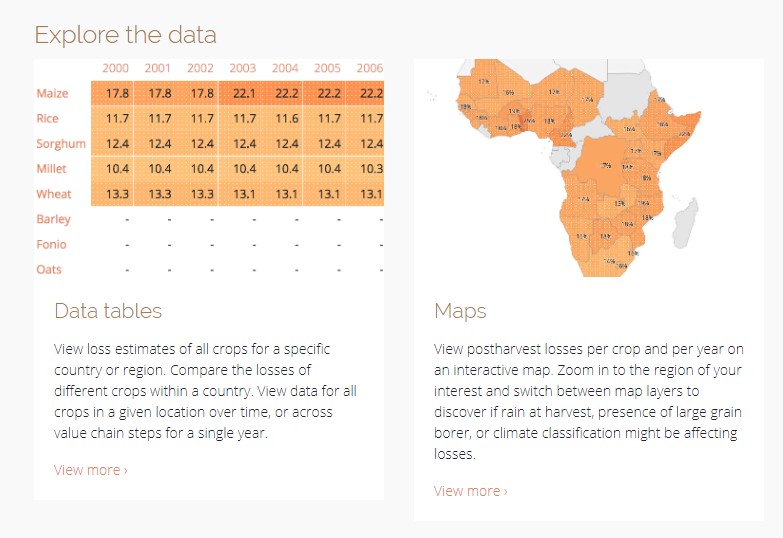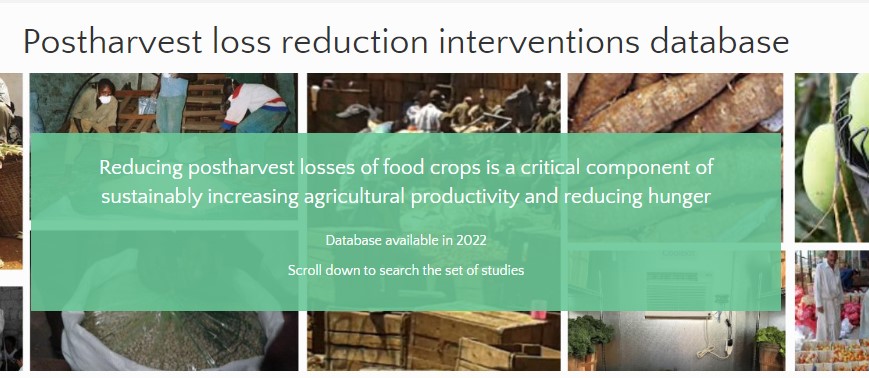PHL data resources
Quantifying postharvest loss is a difficult task. Governments and institutions have conducted surveys and research across the world to measure losses for different crops and circumstances. This is a collection of some of the largest data aggregations that are freely available.
Databases

African Post Harvest Loss Information System (APHLIS+)
The African Postharvest Losses Information System (APHLIS) is the foremost international effort to collect, analyze and disseminate data on postharvest losses of cereal grains in sub-Saharan Africa. In its latest phase, known as APHLIS+, the service is expanding the range of crops it covers to include legumes and roots and tubers. APHLIS+ includes estimates of the economic and nutritional dimensions of postharvest loss. The project is led by the Natural Resources Institute of the University of Greenwich.
The APHLIS+ website also includes downloadable resources, including a PHL Calculator based on the APHLIS+ estimation algorithm (Excel), and a Postharvest Loss Assessment Manual (PDF).

Post-Harvest Loss Information System (SIPPOC)
The Post-Harvest Loss Information System (SIPPOC) aims to provide information and tools to assist decision-making related to post-harvest losses in Brazil and in the world, both by the public and private sectors. The website includes loss calculation tools, secondary databases of global loss indicators for different crops and agricultural products, and a database of user-submitted research articles. SIPPOC was developed by ESALQ-LOG at the University of São Paulo.
Research databases

Ceres2030 postharvest team research database
The Ceres2030 postharvest team analysed the evidence on interventions for reducing postharvest losses and their associated costs to provide decision-makers with the information needed to help meet the targets set by Sustainable Development Goal 2 of ending hunger by 2030.
The Ceres2030 postharvest team systematically screened and reviewed the evidence base to determine ‘What interventions small-scale producers and associated value chain actors in sub-Saharan African and South Asian countries can adopt to reduce postharvest losses along food crop value chains?’ The synthesis of this evidence for 22 key food crops was published by Nature Sustainability and is available here.
The 334 studies included in the evidence base are available in a searchable database and downloadable spreadsheet.

